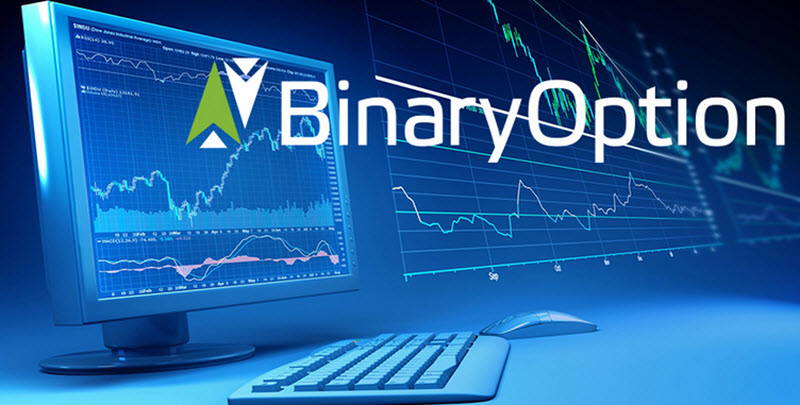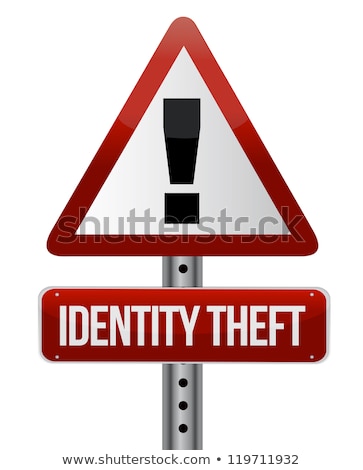

Cases of identity theft have raised privacy concerns in electronic payments. In the absence of proper security measures, sensitive information may be exposed to hackers, leading to illegitimate use of your identity or money. Normally e-payment is done via debit, credit cards, direct bank deposits, and e-checks, other alternative e-payment methods like e-wallets, bitcoin, cryptocurrencies, bank transfers are also gaining popularity. The electronic payment system has grown increasingly over the last decades due to the growing spread of internet-based banking and shopping. As the world advances more with technology development, we can see the rise of electronic payment systems and payment processing devices.
One of the main disadvantages of online payments is the technological illiteracy among many people, especially the older generation. Since they don’t have enough knowledge on how to go about using technology or smartphones, they refrain from using online payment methods. A lot of them also fear the complexities of it and continue to use traditional methods of payment.
It should be able to offer the same performance and cost per transaction overheads with a growing number of customers and transactions. An electronic payment system is a system of financial exchange that is facilitated by a digital financial instrument such as encrypted credit card numbers, electronic cheques backed by a bank. In conclusion, if you are running a business, accepting online payments is the need of current times.
thoughts on “Electronic Payment System, Types of Electronic Payment System ”
E-payment systems are safe, speedy and cost-effective alternatives to paper-based payment systems. NEFT, IMPS, and RTGS allow cashless fund transfers between bank accounts. In these instances, outsourcing to a third-party payment service provider can be the best call. Often found online, these companies can act as go-betweens for companies and their vendors, helping ensure a smooth payment experience.

As with debit cards, universal acceptance of any internet-based payment method is still in the future. Financial exchanges via EDI, online cash transfers between banks, and credit card exchanges are all involved in the electronic payment system. Although B2B electronic payment systems make up a sizable portion of the market, many credit/debit card transactions fall under the B2C category. In this sense, electronic funds transfer, or EDI, is a beneficial tool for business-to-business and business-to-consumer transactions. All the transaction and user details are recorded by the payment systems you are using, and stored in their database.
The transfer of funds from one party to another over electronic media is known as electronic payment. The different approaches to electronic payments include card payment, mail order, and online payment. Online transactions are a daily activity for almost everyone today. With the introduction of the Internet, online transactions became easy. Most product and service companies made their web presence prominent and started interacting with their customers online.
Especially when it takes place without prior warning, a lot of businesses experience heavy bounce rates. Earlier, people used to make cash/card payments at regular intervals. Now, payments are automated and people don’t have to actually remember to pay or take the effort to go all the way to the physical place of business to make their payments. This has made receiving and accepting payments easier for both the seller and the customer. With online payment features, you can offer your customers a wide variety of payment options to choose from.
Methods of Payments Used on Craigslist
Although in cyberspace there are many scammers, in one of the previous articles we described in detail how to make your e-currency account secure. Given the current volatility of digital currencies, it’s difficult to predict what role they’ll play in the future. Whatever the case may be, it appears that this specific form of cash is gaining greater recognition and notoriety with each passing day. Having explained what is e-payment system, here are its primary advantages. If the card falls in wrong hands, there is a danger of expenditure of entire bank balance. You will obviously inform the concerned authorities about the loss but the time taken between losing the card and informing the authorities is critical.
- Aside from simplifying the process of physically collecting cash payments, e-payments affected ecommerce through being both cost and time effective for the supplier.
- The use of electronic checks and credit cards are two examples of post-paid payment systems.
- To be active in the financial sector, such as banks, finance companies, credit card companies, etc., a unique system called the Electronic Payment System is needed for B2B translation between these financial sectors.
- You also receive instant e-mails and SMS alerts after every transaction.
- If digital payment doesn’t interfere with an electronic transaction, the nature of online businesses has its own disadvantages.
The use of electronic payment systems has skyrocketed in recent years, and this has been further exacerbated by the pandemic. The preference for physical payment methods like cash and cheques is at an all-time low, and it doesn’t look like that trend is going to reverse anytime soon. It’s not just consumers either; business owners are moving away from petty cash and embracing e-payment systems such as prepaid business cards. While implementing online payment gateways, some services may demand setup costs or even processing fees for customers using those facilities. Setting up online payment options obviously requires access to the internet and other services that come along with it. This easily leads to incurring extra costs and both the sellers and customers can find it tiresome.
How Package, Design And Color Combination Of a Product Play’s a Crucial role in brand Identity?
Many vendors still want to be paid via check and for those that do, eChecks are quicker and safer than their paper counterparts. No one ever has to worry about an eCheck going missing in the mail or taking three weeks to get wherever it’s supposed to go. People might be familiar with the Automated Clearing House, or ACH as the method for direct deposit of paychecks, with more than 90 percent of workers preferring to get paid this way. 72% of employees say out-of-pocket expenses have negatively impacted their personal finances.
Limitations on Amount and Time
Most online transactions also have a time limit under which you need to complete the process . All these limitations can prove to be pretty inconvenient to some users. The electronic currency should be interoperable and exchangeable with other forms of electronic cash, paper currencies, and deposits in the bank accounts, bank notes or any other financial instrument. E-payment systems come with an increased need to protect sensitive financial information stored in a business’s computer systems from unauthorized access. Enterprises with in-house e-payment systems must incur additional costs in procuring, installing and maintaining sophisticated payment-security technologies. While there are no additional charges for making a cash payment, trips to the store typically cost money, and checks also need postage.
These devices are connected to the customer’s bank account and are used to make online payments. However, if you are a business and want to accept e payments, you have to work on your electronic payment system to provide better and secure service for your customers. E-payment methods could be classified into two areas, credit payment systems and cash payment systems. Debit and credit cards are unlikely to remain the most common payment options indefinitely. Of course, one of the key advantages of digital currency is that it has low fees.
Funds represented by one payment system should be easily convertible into funds represented by other payment systems. Users should be able to transfer money from electronic payment systems. Users should be able to transfer money from electronic payment systems to another accepted money from i.e. receive it in cash, or transfer to a bank account. Although stringent measures such as symmetric encryption are in place to make e-payment safe disadvantages of e payment system and secure, it is still vulnerable to hacking. Fraudsters, for instance, use phishing attacks to trick unsuspecting users into providing the log-in details of their e-wallets, which they capture and use to access the victims’ personal and financial information. Without superior identity verification measures like biometrics and facial recognition, anyone can use another person’s cards and e-wallets and get away without being caught.
The system uses a particularly vulnerable protocol to establish the identity of the person authorizing a payment. Passwords and security questions aren’t foolproof in determining the identity of a person. So long as the password and the answers to the security questions are correct, the system doesn’t care who’s on the other side. If someone gains access to your password or the answers to your security question, they will have gained access to your money and can steal it from you. You can buy the product within seconds, transfer money, pay your loan EMIs, get salary credits, and more with electronic payments.
The system is prone to errors, particularly when it has to handle large amounts of payments on a frequent basis with many recipients involved. It’s important to constantly check your pay slip after every pay period ends in order to ensure everything makes sense. Failure to do this may result in payment conflicts caused by technical glitches and anomalies.
Let us see what are the main advantage as well as disadvantages of this payment method. E-payment enjoys advantages for it is convenient, fast, efficient and economic. As long as the user has a computer connecting to the internet, he will be able to stay indoors and complete the whole payment within a very short time. The cost is even less than one percent of that of the traditional way. E-payment introduces digital circulation to realize information transmission, so all means of e-payment are digitalized.
Although there are downsides to e-payment systems, no method of payment will be perfect, and the pros far outweigh the cons. Whichever way you look at it, modern consumer culture is becoming increasingly cashless, and it pays to keep up with this trend. E-payments have been part of us for some time and have shown their importance, especially during the pandemic when we try to maintain social distance, where e-payments help us pay anyone anytime as per our convenience.
Advantage: Reduced Transaction Costs
Credit cards have drawbacks when it comes to making purchases on credit. Perhaps the main drawback for B2B purchases is that credit cards will charge the merchant a fee. Swipe fees have increased over the years, with the National Retail Federation noting these fees were around $20 billion annually in 2001 compared to $137.8 billion in 2021. Important messages, including money transfers that occur through internet banking, are kept secure.
Biometric payments – Biometric payments are done via using/scanning various parts of the body, e.g. fingerprint scanning, eye scanning, facial recognition, etc. QR payments – QR code-enabled payments have become immensely popular. QR code stands for ‘Quick Response’ code, a code that contains a pixel pattern of barcodes or squares arranged in a square grid. Mobile wallet – An evolved form of e-wallet, mobile wallet is extensively used by lots of customers. You can not forget your virtual wallet somewhere and it can not be taken away by robbers.
